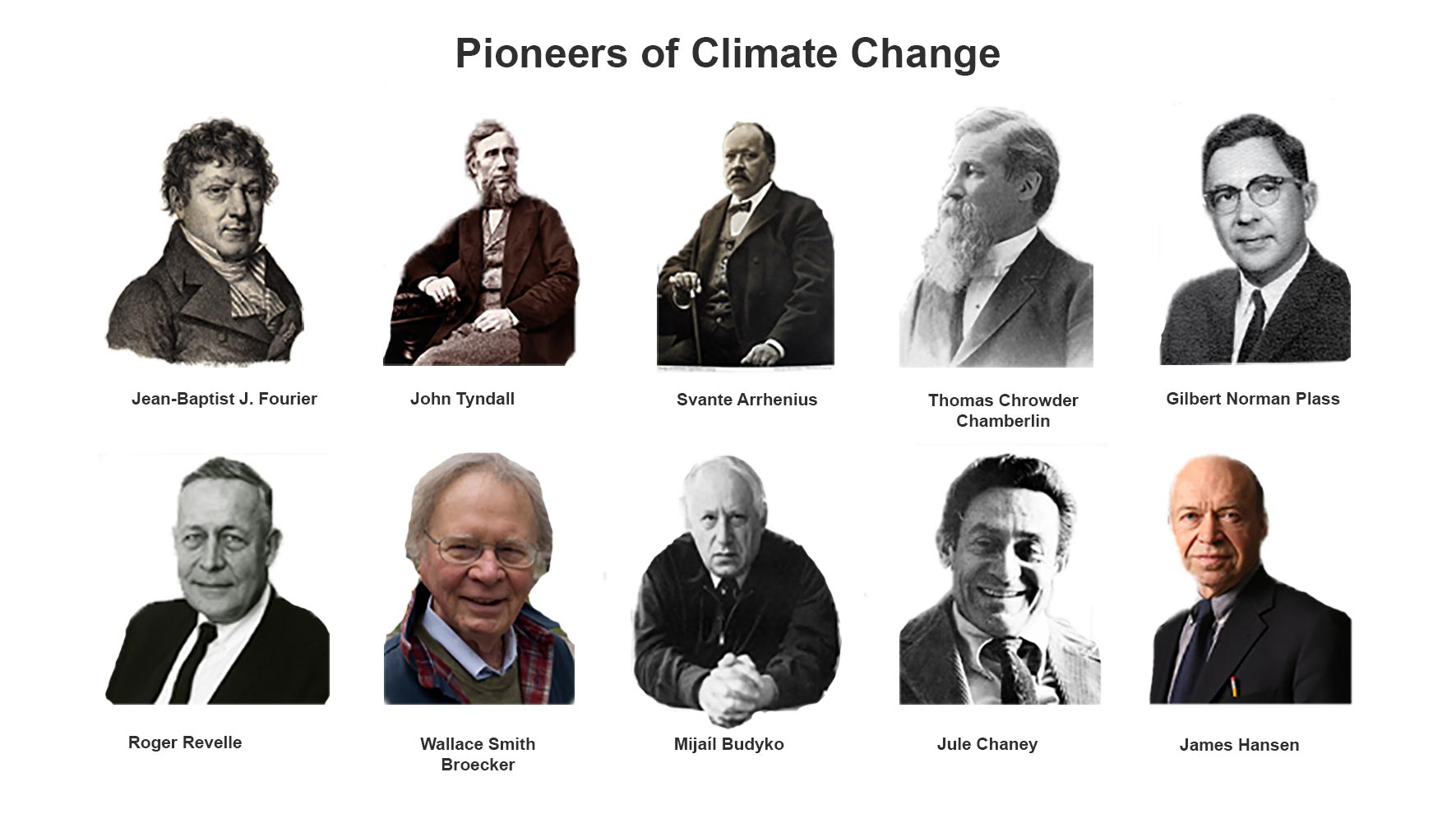At all times and in all sciences, there have always been visionaries, those people who anticipate situations long before other persons can glimpse them. This is the case of Jean-Baptiste Joseph Fourier (1768-1830), a French mathematician and physicist, who in 1824 calculated that an object the size of the Earth and with a similar distance from the sun, it should be much colder to what our planet is really like. He affirmed that it was maintained with a temperate climate because the atmosphere retains the heat as if it were under glass. Thus, Fourier has the honor of being the first to use the greenhouse analogy.
In 1859, the Irish John Tyndall (1820-1893), another ahead of his time, discovered that CO2, methane and water vapor trap infrared radiation, a component of solar rays, providing a relatively stable temperature in Earth. This characteristic was what allowed the expansion of life on our planet.
Svante Arrhenius (1859-1927), when cars still looked like horse-drawn cars, but without horses, and still far from becoming massive and the great polluters, in 1896 the Swedish scientist proclaimed that fossil fuels could accelerate the heating of the Earth, establishing a relationship between concentrations of atmospheric carbon dioxide and temperature. Possibly impacted by the proliferation of black smoke from the chimney industry and the heavy and noisy locomotives, he suggested that a double concentration of CO2 would cause a temperature increase of 5 °C, due to its absorption capacity of infrared radiation, together with the water vapor. Arrhenius thus gave an important step towards demonstrating the theory of the greenhouse effect.
In 1899, Thomas Chrowder Chamberlin (1843-1928) developed in detail the idea that changes in climate could be the result of variations in the concentration of carbon dioxide in the atmosphere. In the following decades, the presumptions of Arrhenius and Chamberlin were poorly estimated, as it was thought that CO2 did not influence the temperature of the planet and the greenhouse effect was attributed exclusively to water vapor.
A few decades would go by without giving importance to the issue, among other things because it was believed that the consequences of human activities would be minimal and could be neutralized by the forces of nature, such as the oceans, considered large carbon sinks, which they would cancel the pollution of anthropogenic origin. It is now proven that the oceans are not sinks for all atmospheric CO2. Only one third of the CO2 due to human activities can be retained by the seas. In 1940 it was found by infrared spectroscopy that the increase of CO2 in the atmosphere causes a greater absorption of infrared radiation.
In the early 1950s, Gilbert Norman Plass (1920-2004), a Canadian physicist, another of the pioneers of calculation on solar and infrared radiation, concluded that CO2 emissions affect climate and climate change. He published his results in a summary, in 1955.
Roger Revelle (1909 – 1991), American scientist, coauthor in 1957 of an article with Hans Suess, that suggests that the gases emissions by human activities could create a “greenhouse effect”, which would cause the global warming with the time. Revelle was the founding president of the first Committee on Climate Change and Ocean and participated in the creation of the International Geophysical Year, which later became the main center of the Carbon Dioxide Atmospheric Program.
In these times the press and specialized publications began to speak on the subject. American Scientist, published in 1956 a series of articles, including one directed to the great public. In 1957, The Hammond Times, to describe Revelle’s research, mentioned the terms “global warming” and “climate change,” and warned of the effects of large-scale CO2 use. But these warnings fell into oblivion for a long time.
By 1972, at the initiative of Sweden, the “First Earth Summit” was held, in conjunction with the UN, also known as the “United Nations Conference on the Human Environment.” At this meeting the “Declaration of Stockholm” was produced, comparable with the Declaration of Human Rights, oriented towards the normalization of the relations of human beings with the environment.
Wallace Smith Broecker, in 1975, published a scientific article: “Climate change: are we on the verge of pronounced global warming?” Since then the denomination began to be used more and more frequently. In 1976, the declaration of Mikhail Budyko, “has begun a global warming”, had great diffusion. In 1979 the National Academy of Sciences of the United States, led by Jule Charney, described the effects of CO2 in a broader way, attributing its use to the increase of climate change.
James Hansen, a NASA climatologist, testified before the US Senate in June 1988, through one of the first public statements that the warming caused by man had already considerably affected the global climate. From then on, the term global warming became popular in the press and in the colloquial language.
1992 was the year in which “The Second Earth Summit” took place, held in Rio de Janeiro. In it the “Rio Declaration” was issued, reaffirmation of the “Stockholm Declaration” and the creation of the “United Nations Framework Convention on Climate Change” (UNFCCC), which came into force in March 1994. As the supreme organ of the UNFCCC, the COP, Conference of the Parties, was established to give practical meaning to its main objectives. Among them, the stabilization of greenhouse gas (GHG) concentrations in the atmosphere. The first COP was held in Bonn in 1995. Since then COPs are held every year.
Sandor Alejandro Gerendas-Kiss
Sources:
Lenntech. Historia sobre el efecto invernadero y calentamiento global de la tierra. Retrieved from
https://www.lenntech.es/efecto-invernadero/historia-calentamiento-global.htm
Wikipedia. Svante August Arrhenius. Retrieved from
https://es.wikipedia.org/wiki/Svante_August_Arrhenius
Wikipedia. Efecto invernadero. Retrieved from https://es.wikipedia.org/wiki/Efecto_invernadero
American Scientist. Carbon Dioxide and the Climate. Retrieved from
https://www.americanscientist.org/article/carbon-dioxide-and-the-climate
Real climate. The carbon dioxide theory of Gilbert Plass. Retrieved from
http://www.realclimate.org/index.php/archives/2010/01/the-carbon-dioxide-theory-of-gilbert-plass/
The Guardian. International edition. News, environment, climate change. The father of climate change. Retrieved from
https://www.theguardian.com/environment/2005/jun/30/climatechange.climatechangeenvironment2







Leave A Comment